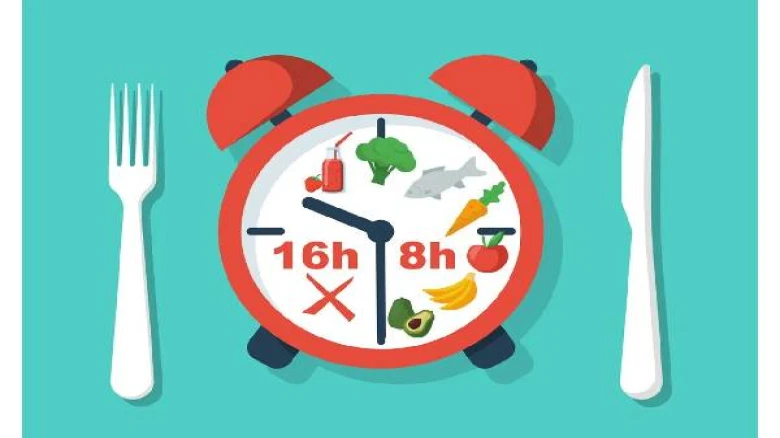Regional

Another variation relies on time-restricted eating. That means followers should fast for a specified number of hours - typically 16 to 20 per day – while freely consuming foods within four to eight hours.
color:#0E101A">
color:#0E101A">Digital Desk:
color:#0E101A"> Intermittent fasting is defined by alternating set periods
of fasting with periods in which eating is permitted. One method is
alternate-day fasting. On “fast days,” followers of this form of
fasting are restricted to consuming no more than 500 calories per day; on
“feast days,” which occur every other day, they can eat freely, with no
restrictions on the types or quantities of foods eaten.
Other methods include the
increasingly popular 5:2 method. This form of fasting involves five days of
feasting and two days of fasting per week.
Another variation relies on
time-restricted eating. That means followers should fast for a
specified number of hours - typically 16 to 20 per day – while freely consuming
foods within four to eight hours.
Human metabolism
color:#0E101A">
The human body requires a
continual supply of energy to sustain life, and the foods we eat
provide us with this energy. But because eating is often followed by periods
without eating, an intricate set of biological pathways is in place to meet the
body’s energy demands between meals.
Most of the pathways function
at some level, but they fluctuate following a meal in a
predictable pattern called the fed-fast cycle. The time frames of the cycle can
vary depending on the food types eaten, the size of the meal and the person’s
activity level.
So what happens, metabolically
speaking, after we eat? Consuming carbohydrates and fats lead to a rise in
blood glucose and lipid levels, including cholesterol and triglycerides.
This triggers the release of
insulin from the pancreas. Insulin helps tissues take up glucose
and lipids throughout the body, which supplies the tissues with energy. Once energy needs are met,
leftover glucose is stored in the liver and skeletal muscle in a
condensed form called glycogen. When glycogen stores are full, excess glucose
converts to fatty acids and is stored in fat tissue.
About three to 18 hours after a
meal – again, depending on a person’s activity level and size - the amount of
circulating blood glucose and lipids returns to baseline levels. So tissues
must rely on fuel sources already in the body: glycogen and fat. The pancreas
secretes a hormone called glucagon, which helps facilitate the breakdown of
glycogen and fat to provide energy for the body between meals.
Glucagon also initiates a
process known as gluconeogenesis, which is the synthesis of
glucose from non-dietary sources. This helps maintain the right level of blood
glucose levels.
When the body reaches a true
fasting state - about 18 hours to two days without additional
food intake – the body’s stores of glycogen are depleted, and tissues like the
heart and skeletal muscle start to rely heavily on fats for energy. That means
an increase in the breakdown of the stored fats.
“So intermittent fasting
is the key to ultimate fat burning?” Well, it’s not that simple. Let’s go
through what happens next.
The starvation state
color:#0E101A">
When the body enters the
starvation state, the body goes into self-preservation mode, and a
metabolic shift occurs to spare body protein. The body continues to synthesize
glucose for those cells and tissue that need it, but the breakdown of stored
fats increases to provide energy for tissues such as the skeletal muscle,
heart, liver and kidneys.
color:#0E101A">
color:#0E101A">
Possible downsides
color:#0E101A">
It might work if an
“all-or-nothing” dietary approach to weight loss sounds appealing to you.
Indeed, intermittent fasting diets have produced clinically significant amounts
of weight loss. Intermittent fasting may also reduce disease risk by lowering
blood pressure and lipid levels.
Numerous studies have shown
that weight reduction from an intermittent fasting diet is no greater than
weight loss on a standard calorie-restricted diet.
Exercise is something else to
consider. It can be the best alternative. It helps preserve
lean muscle mass and may also contribute to increased weight loss and long-term
weight maintenance. This is important because nearly a quarter of the weight
lost on any diet is muscle tissue, and the efficacy of intermittent fasting for
weight loss has been demonstrated for
only short durations.
So, before you go for an
intermittent fast diet, remember its pros and cons and the proper way to do it.
Leave A Comment